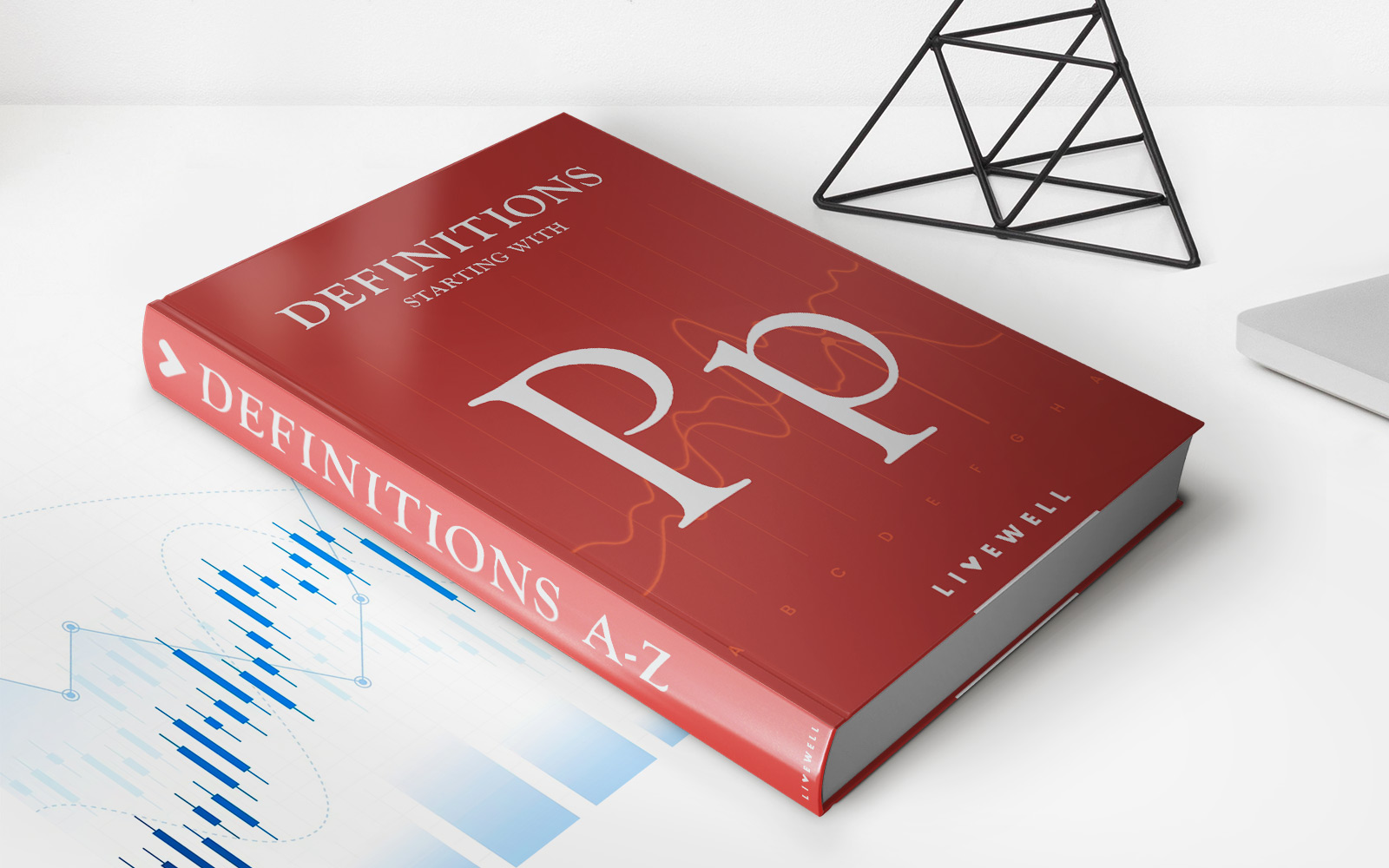

Finance
What Does ISO Stand For Insurance?
Published: November 17, 2023
Discover what ISO stands for in insurance and its significance in the finance industry. Learn how ISO standards can impact insurance policies and coverage.
(Many of the links in this article redirect to a specific reviewed product. Your purchase of these products through affiliate links helps to generate commission for LiveWell, at no extra cost. Learn more)
Table of Contents
Introduction
Welcome to the world of insurance, where acronyms and jargon can often leave individuals feeling perplexed and overwhelmed. One such acronym that frequently arises when discussing insurance is ISO. You may have come across this term in insurance policies, claims, or industry discussions, but what exactly does ISO stand for in insurance? In this article, we will explore the meaning of ISO, its significance in the insurance industry, and the role it plays in setting standards.
ISO stands for Insurance Services Office. It is a leading provider of data, analytics, and decision-support solutions for insurers and other professionals in the insurance industry. Established in 1971, ISO has become an integral part of the insurance landscape, playing a crucial role in shaping the industry and promoting best practices.
ISO’s primary objective is to collect and analyze data related to insurance risks and develop various products and services that help insurers make more informed underwriting and pricing decisions. Through its extensive database and analytical tools, ISO offers valuable insights on past claim patterns, loss costs, and market trends.
ISO’s influence in the insurance industry can be attributed to its role in setting standardization and uniformity across policies and procedures. By establishing standardized forms and information codes, ISO ensures consistency in policy language, facilitating easier comparison of coverage options and reducing ambiguity for policyholders.
Moreover, ISO provides insurers with rating plans and loss costs that help determine the appropriate premium rates for different types of insurance, based on historical data and statistical analysis. This enables insurers to align their pricing strategies with industry benchmarks and remain competitive in the market.
Throughout the article, we will delve deeper into the significance of ISO in the insurance industry and explore the benefits it brings to insurers and policyholders alike. We will also highlight some of the challenges faced by insurers in implementing ISO standards and adapting to the ever-evolving insurance landscape.
Definition of ISO
ISO, an acronym for Insurance Services Office, is an organization that provides comprehensive data, analytics, and decision-support services to the insurance industry. Established in 1971, ISO has become a principal source of information and standardization for insurers, helping them assess and manage risks effectively.
ISO collects vast amounts of data related to insurance risks, including claims information, policy details, and loss costs. This data is then analyzed to identify patterns, trends, and insights that can be utilized by insurers to make informed decisions and improve their operations.
ISO’s primary role is to develop standardized forms, rating plans, and loss costs that ensure consistency across insurance policies and operations. This standardization enables insurers to streamline their processes, improve efficiency, and provide transparent and comparable coverage options to policyholders.
By setting standardized forms, ISO establishes uniform policy language that reduces ambiguity and ensures clarity for both insurers and policyholders. These standardized forms include definitions, exclusions, conditions, and endorsements, which are incorporated into insurance policies to provide a consistent framework for coverage.
In addition to standardized forms, ISO also creates information codes that categorize various policy attributes and risk characteristics. These codes enable insurers to process data more efficiently, ensuring accurate and reliable underwriting, rating, and claims handling.
ISO’s data and analytics services go beyond standardization. It provides insurers with valuable insights and tools to assess risk exposure, evaluate loss potential, and develop appropriate pricing strategies. By leveraging ISO’s vast database and analytical capabilities, insurers can make data-driven decisions that lead to better risk management and improved profitability.
Moreover, ISO’s services extend to benchmarking and market intelligence, allowing insurers to compare their performance against industry standards and identify areas for improvement. This helps insurers stay competitive and adapt to evolving market dynamics.
In summary, ISO is a significant organization in the insurance industry, providing a comprehensive set of data, analytics, and standardization services to insurers. Its mission is to facilitate informed decision-making, standardize practices, and enhance the overall efficiency and effectiveness of the insurance industry.
ISO in the Insurance Industry
The Insurance Services Office (ISO) plays a vital role in the insurance industry by providing essential services and solutions that help insurers enhance their operations and improve risk management. ISO’s impact can be seen in various aspects of the insurance industry, ranging from policy development and underwriting to claims management and risk assessment.
One of the key contributions of ISO to the insurance industry is the development of standardized forms. These forms establish consistent policy language across insurers, making it easier for policyholders to understand their coverage and compare policies. Standardized forms reduce ambiguity and enhance transparency, ensuring that insurers and policyholders are on the same page when it comes to coverage terms and conditions.
ISO also plays an important role in rating and underwriting. Through its vast database and analytical capabilities, ISO provides insurers with rating plans and loss cost data that help them calculate appropriate premium rates based on risk factors. By leveraging ISO’s standardized data and analysis, insurers can make accurate pricing decisions, balancing competitiveness and profitability.
In addition to policy development and underwriting, ISO’s influence extends to claims management. Insurance companies often use ISO’s claims information to analyze historical loss data, ascertain patterns, and identify fraudulent activities. This helps insurers improve their claims processes, streamline investigations, and minimize losses.
Furthermore, ISO offers risk assessment tools and services to insurers, aiding them in evaluating and understanding potential risks. By leveraging ISO’s data and analytics, insurers can identify areas of risk exposure and develop strategies to mitigate those risks effectively. This enables insurers to make more informed underwriting decisions, ensuring that policies are appropriately priced to account for potential losses.
ISO also collaborates with regulatory authorities and industry organizations to create and maintain guidelines and best practices. By actively participating in industry discussions and compliance initiatives, ISO helps insurers stay updated with regulatory requirements and promotes adherence to ethical and legal standards.
Overall, ISO’s presence in the insurance industry is significant, providing insurers with the necessary tools, data, and standards to navigate the complexities of the market. Through its contributions in policy standardization, rating and underwriting support, claims information, risk assessment, and industry collaboration, ISO continues to shape and elevate the insurance industry.
ISO’s Role in Setting Standards
Insurance Services Office (ISO) plays a crucial role in the insurance industry by setting and establishing standards that promote uniformity, consistency, and transparency across policies, procedures, and operations. ISO’s standards serve as benchmarks for insurers, helping them streamline their processes, improve efficiency, and deliver reliable and standardized services to policyholders.
One of the key areas where ISO sets standards is in policy language and forms. ISO develops standardized forms that insurers can use as a basis for their insurance policies. These forms ensure consistency in the structure, content, and terminology used in insurance contracts. By providing a standardized framework, ISO makes it easier for insurers to communicate policy terms and conditions to policyholders, reducing confusion and increasing transparency.
Besides policy forms, ISO creates standard information codes that insurers can use to categorize various policy attributes and risk characteristics. These codes facilitate data processing and analysis, allowing insurers to efficiently underwrite policies, determine appropriate premium rates, and handle claims.
ISO’s standards also extend to rating and underwriting. ISO provides insurers with rating plans and loss costs based on its extensive database and analytical capabilities. These standards allow insurers to develop consistent pricing strategies aligned with industry benchmarks. By adhering to ISO’s rating plans, insurers ensure fairness, competitiveness, and accuracy in their premium calculations.
ISO sets standards not only for policies and pricing but also in claims management. ISO provides insurers with claims information and loss data to help them analyze patterns, identify potential fraud, and improve claims handling procedures. These standards help insurers streamline their claims processes, expedite investigations, and ensure prompt and fair resolution of claims.
Moreover, ISO’s role in setting standards extends to risk assessment and mitigation practices. By collecting and analyzing data on historical loss experiences, ISO assists insurers in evaluating risks associated with various policy types. ISO’s risk assessment standards enable insurers to make informed decisions on risk management strategies, ensuring they price policies adequately, maintain solvency, and meet regulatory requirements.
ISO’s active engagement with industry stakeholders, regulatory bodies, and insurance associations further reinforces its role in setting standards. By participating in discussions, providing expertise, and collaborating on the development of guidelines and best practices, ISO helps shape industry standards and contributes to the overall improvement of the insurance industry’s practices and performance.
In summary, ISO plays a critical role in setting standards that promote consistency, transparency, and efficiency in the insurance industry. Through its standardized policy forms, information codes, rating plans, claims information, and risk assessment practices, ISO enables insurers to deliver reliable and standardized services, improving customer experience and overall industry performance.
Importance of ISO in Insurance
The Insurance Services Office (ISO) holds significant importance in the insurance industry, providing insurers with valuable resources, data, and standards that enhance their operations and improve risk management. The contributions of ISO have a widespread impact on insurers, policyholders, and the overall insurance landscape.
One of the key reasons for the importance of ISO is its role in standardization. ISO develops standardized forms, policy language, and information codes that ensure consistency and uniformity across insurance policies. This standardization makes it easier for insurers to compare coverage options, simplifies policy interpretation for policyholders, and reduces the risk of disputes or misunderstandings.
ISO’s standardized forms and information codes also streamline processes for insurers. By using these consistent and well-defined tools, insurers can effectively underwrite policies, calculate appropriate premium rates, and process claims. Standardization improves efficiency, reduces errors, and enhances overall operational effectiveness for insurance companies.
Another crucial aspect of ISO’s importance is its role as a trusted source of data and analytics. ISO collects a vast amount of data related to insurance risks, loss costs, and claims information. This data is thoroughly analyzed to identify patterns, trends, and insights that enable insurers to make informed decisions and better manage risks.
ISO’s data and analytical tools provide insurers with valuable insights into market trends, prediction of future losses, and identification of potential fraud. By leveraging ISO’s data, insurers can develop robust underwriting strategies, accurately price their policies, and identify areas for operational improvements.
The standardized loss costs and rating plans offered by ISO are crucial in helping insurers calculate accurate premium rates. ISO’s pricing data enables insurers to align their rates with industry benchmarks, ensuring competitiveness and fair pricing for insured individuals.
Furthermore, ISO’s influence extends to claims management. The comprehensive claims information and loss experience data provided by ISO assist insurers in processing claims efficiently, identifying patterns to detect potential fraud, and improving claims settlement procedures. This ultimately leads to prompt and fair resolution of claims, enhancing customer satisfaction and reducing the financial burden on insurers.
The importance of ISO is also evident in its collaboration with regulatory authorities and industry associations. ISO actively participates in developing and maintaining guidelines and best practices, ensuring compliance with regulatory requirements, and promoting ethical standards in the insurance industry. This collaboration helps insurers navigate complex regulatory landscapes and maintain industry-wide integrity.
In summary, ISO’s importance in the insurance industry lies in its role as a trusted source of data, standardization of policies and procedures, and collaboration with industry stakeholders. By providing insurers with vital resources, data analytics, and insight-driven decision-making tools, ISO enables insurers to enhance their operations, improve risk management, and deliver reliable and standardized services to policyholders.
Benefits of ISO Standards in Insurance
The Insurance Services Office (ISO) sets industry standards that play a crucial role in the insurance ecosystem. These standards offer a range of benefits for insurers, policyholders, and the broader insurance industry. Let’s explore the key benefits of adhering to ISO standards in insurance.
Consistency and Clarity: ISO standards ensure consistent policy language across insurers, creating a common framework for coverage. This consistency leads to improved transparency and understanding for policyholders. By using standardized forms, insurers can communicate policy terms and conditions clearly, reducing ambiguity and potential disputes.
Efficiency and Accuracy: ISO’s standardized forms and information codes streamline processes for insurers. By using consistent data categorization and standardized forms, insurers can efficiently process applications, underwrite policies accurately, and handle claims promptly. This promotes operational efficiency while reducing errors and improving overall accuracy.
Enhanced Risk Management: ISO’s standardized loss costs, rating plans, and risk assessment tools are invaluable for insurers in managing risks effectively. By leveraging ISO’s data and analysis, insurers can make informed underwriting decisions, accurately price policies based on risk factors, and implement effective risk mitigation strategies. This leads to improved risk management and better alignment between premiums and potential losses.
Competitive Advantage: Adhering to ISO standards helps insurers remain competitive in the marketplace. ISO’s standardized rating plans allow insurers to align their pricing strategies with industry benchmarks, ensuring fair and competitive premium rates. By offering transparent coverage options based on ISO standards, insurers can differentiate themselves and attract policyholders who value consistency and clarity.
Better Claims Handling: ISO’s claims information and loss experience data assist insurers in processing claims efficiently. By leveraging ISO’s data, insurers can identify patterns, detect potential fraud, and streamline claims investigations. Efficient claims handling leads to quicker settlements, improved customer satisfaction, and reduced financial losses for insurers.
Benchmarking and Performance Evaluation: ISO’s involvement in the insurance industry provides insurers with benchmarking and market intelligence. Insurers can compare their performance against industry standards, identify areas for improvement, and make data-driven decisions to stay competitive. ISO’s standards serve as a reference point for insurers to evaluate their processes, pricing, and overall performance.
Compliance and Regulatory Support: ISO’s collaboration with regulatory authorities ensures that insurers stay compliant with regulatory requirements. By aligning their practices with ISO standards, insurers can navigate regulatory landscapes more effectively, reduce the risk of regulatory non-compliance, and maintain industry-wide integrity.
In summary, adhering to ISO standards in the insurance industry offers numerous benefits including consistency, clarity, efficiency, risk management, competitive advantage, improved claims handling, benchmarking, and regulatory compliance. ISO’s standards contribute to the overall trust, reliability, and standardization of insurance practices, benefiting insurers, policyholders, and the industry as a whole.
Challenges Faced by Insurers in Implementing ISO Standards
While ISO standards provide substantial benefits to insurers and the insurance industry as a whole, the implementation of these standards does come with its fair share of challenges. Insurers encounter various obstacles when integrating ISO standards into their operations. Let’s explore some of the common challenges faced by insurers when implementing ISO standards.
Integration Complexity: Incorporating ISO standards into existing policies and procedures can be a complex process. Insurers may need to modify their systems, software, and documentation to align with the standardized forms and information codes. Ensuring seamless integration of ISO standards across various departments and legacy systems can be challenging, requiring careful planning, coordination, and resources.
Limited Resources: Implementing ISO standards may require significant investment in terms of time, manpower, and technology. Smaller insurers, in particular, may struggle with limited resources and may face difficulties allocating sufficient budgets and personnel to fully embrace ISO standards. This can impact the pace and effectiveness of implementation efforts.
Training and Change Management: Adapting to new ISO standards often requires training and change management initiatives for employees. Insurers need to ensure that staff members have a clear understanding of the changes and are equipped with the necessary skills to implement the standards effectively. Managing resistance to change and fostering buy-in from employees can be a challenge, leading to potential delays or gaps in compliance.
Data Collection and Management: Implementing ISO standards may necessitate capturing and aggregating specific data elements for standardized reporting and analysis. Insurers may encounter challenges in collecting, organizing, and managing the required data from diverse sources. Data quality and accuracy can also be a concern, requiring insurers to establish robust data governance frameworks to ensure the reliability and integrity of the information used for compliance with ISO standards.
Adapting to Market Changes: The insurance industry is continually evolving, with new products, emerging risks, and changing customer expectations. Insurers must ensure that their implementation of ISO standards remains flexible and adaptable to accommodate market shifts. The challenge lies in striking a balance between adhering to standardized practices and remaining agile enough to respond to market dynamics.
Regulatory Compliance: While ISO standards help insurers meet regulatory requirements, keeping up with evolving regulatory landscapes can be challenging. Insurers must stay abreast of any changes in regulations that may impact the implementation of ISO standards. Adapting to new compliance requirements and maintaining compliance can pose hurdles, especially for insurers operating in multiple jurisdictions with varying regulations.
While these challenges may seem daunting, insurers can overcome them by adopting a strategic approach that includes proper planning, resource allocation, training, data management, and continuous monitoring. By addressing these challenges head-on, insurers can effectively implement ISO standards and reap the benefits of improved efficiency, risk management, and industry alignment.
Conclusion
The Insurance Services Office (ISO) plays a critical role in the insurance industry by providing insurers with standardized forms, data analytics, and decision-support services. ISO’s standards bring numerous benefits to insurers, policyholders, and the industry as a whole.
ISO’s role in setting standards ensures consistency, clarity, and transparency in insurance policies, making it easier for policyholders to understand and compare coverage options. The standardization of forms and information codes also streamlines processes for insurers, improving efficiency, accuracy, and overall operational effectiveness.
By leveraging ISO’s data and analytics, insurers can make informed decisions regarding risk management, underwriting, pricing, and claims handling. ISO’s standardized loss costs, rating plans, and risk assessment tools enable insurers to improve risk evaluation, ensure appropriate pricing, and enhance overall profitability.
In addition to operational benefits, ISO’s standards provide insurers with a competitive advantage in the marketplace. By offering standardized coverage options and aligning pricing with industry benchmarks, insurers can differentiate themselves, attract policyholders, and foster greater trust and satisfaction.
Despite the advantages, insurers may face challenges in implementing ISO standards. These challenges include integration complexities, limited resources, training and change management requirements, data collection and management, adapting to market changes, and maintaining regulatory compliance. However, these challenges can be overcome with proper planning, resource allocation, and continuous monitoring.
In conclusion, ISO’s significance in the insurance industry cannot be overstated. Its contribution to standardization, efficiency, risk management, competitiveness, and compliance ensures a more transparent and robust insurance landscape. By embracing and implementing ISO standards, insurers can enhance their operations, deliver better experiences to policyholders, and contribute to the overall growth and stability of the insurance industry.














